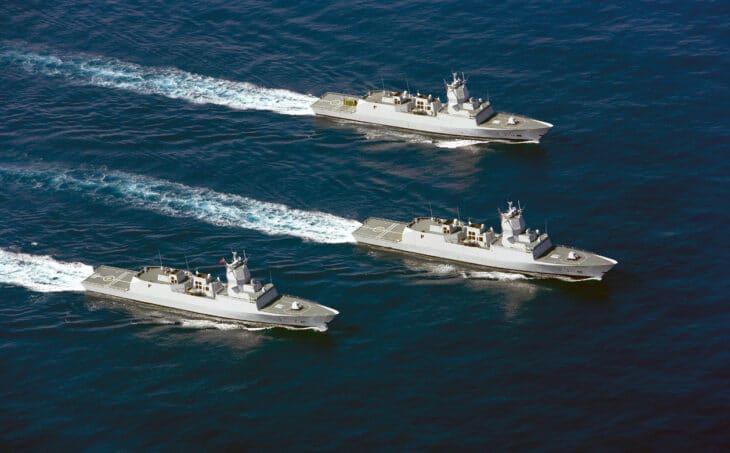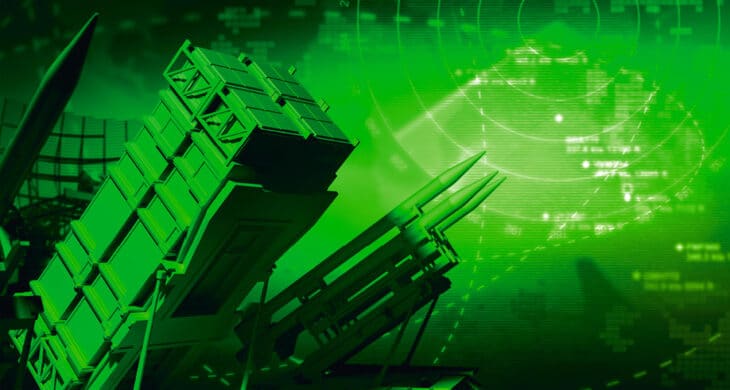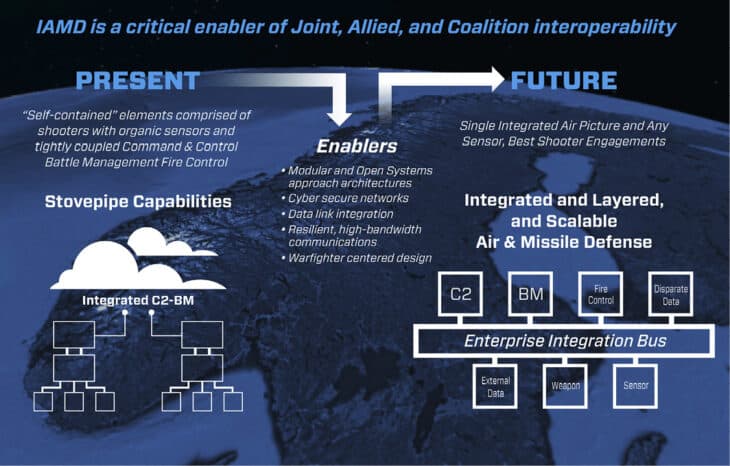Norway and missile defence
As Norwegian leaders debate whether to contribute to NATOs ballistic missile defense architecture, it is important to remember that the geopolitical context has evolved dramatically since the 2010 Lisbon summit.

Missile defense in Europe has always suffered from mixed strategic messaging. The original motivation for the system had a genuine strategic component, namely to negate Iran’s ability to threaten Europe – or eventually the United States – with ballistic missiles in order to coerce the West or deter regional intervention. The physical presence of US missile defense installations on the eastern edges of the alliance ensure a permanent American footprint in Europe, unaffected by Obama’s “pivot” to Asia or Trump’s “America First” platform, and serve as an obviously reassuring yet largely unacknowledged “tripwire” against possible Russian encroachment. This context is highly relevant for Norway as it contemplates a missile defense contribution.
Alliance members sincerely sought Russian participation after the alliance approved plans at the 2010 Lisbon summit to move forward with the current missile defense system, but the project was doomed to fail. After a short period of cautious optimism, missile defense again generated suspicion and controversy. Even so, an objective cost-benefit analysis of the system’s value against the potential threat posed by Iran appeared less relevant than its significance as an assurance measure and attractiveness as an achievable transatlantic collaborative effort in the post-ISAF era. Alliance members are almost certainly less concerned with Iranian missiles than – to borrow some of the well-worn colloquial justification for the alliance – keeping the Americans in and the Russians out. Indeed, the political effects are so appealing that the technical efficacy of the system can oftentimes seem nearly beside the point. For Norway, however, the technical aspects of the system are highly relevant for its contribution.
How the system works
The precise combination of sensors, missile interceptors, and command and control elements (known as the system architecture) is of fundamental significance for the threats it can handle. Modern missile defense interceptors simply ram the incoming missile and use the kinetic energy of that collision to destroy the target. Clearly, the demand for precision is extraordinarily high when attempting to “hit a bullet with a bullet”, given the tremendous closing speeds involved as the interceptor races toward a collision with the warhead.
This intercept can occur during one of three basic phases of a ballistic missile’s flight. During the initial boost phase lasting only a few minutes, the missile’s booster rocket lifts and accelerates the missile from the launcher. The longer midcourse phase usually occurs outside the atmosphere in the vacuum of space, where the boosters fall away and the warhead deploys and follows an unpowered ballistic trajectory to the target. During the brief terminal phase, the warhead re-enters the atmosphere and falls at high speeds to its target. In a missile defense system, early warning satellites detect the launch and easily track the booster exhaust during its initial phase. Once outside the atmosphere, surface radars track the warhead and calculate the trajectory for the interceptor missile. The interceptor relies on tracking data from surface radars until it nears the point of impact before relying on its own onboard sensors to execute the intercept either outside the atmosphere or during its terminal phase. Modern BMD architectures use a layered approach, seeking multiple intercept attempts at an incoming missile.
The effectiveness of the defense architecture depends on the accuracy of its sensors and interceptors, their geographical placement, and when during flight the threat missile is intercepted. Logically, a larger geographical area can be defended simply by engaging the target earlier – boost phase intercept provides potentially worldwide coverage while terminal intercept can defend little more than, say, the greater Oslo area. Interceptors must be able to reach their targets during an exceptionally short time window, however, making midcourse and terminal phase intercept most practical.
Cold War era radars such as those in Great Britain, Greenland and Alaska have now been upgraded for the missile defense mission and serve an important tracking function
The atmosphere is the other crucial distinction for defenses. Below an altitude of about 80 kilometers, atmospheric forces make it difficult to deploy robust decoys and other countermeasures meant to confuse the defenses. In contrast, discriminating between warhead and decoy in the cold vacuum of space remains a serious challenge. Defenses limited to “lower tier” intercept inside the atmosphere (such as the Patriot system) are capable of tactical point defenses while exo-atmospheric “upper tier” systems such as Aegis BMD and THAAD allow a much larger defensive footprint.1 Systems such as Patriot, THAAD and Aegis BMD pair an organic radar with interceptor launchers, but the networked nature of a BMD architecture also allows an interceptor to be launched as soon as any sensor in the network can relay tracking data – so-called “launch on network”. This is particularly significant because only THAAD’s TPY-2 X-band radar has a significant range to be meaningful for territorial defense of Europe. The SPY-1D radar aboard the American Aegis BMD ships has a reported range of less than 500 kilometers, and the Norwegian SPY-1F version is considerably weaker still.
An intercept therefore will depend on additional radars and sensors that can provide tracking and discrimination data. Cold War era radars such as those in Great Britain, Greenland and Alaska have now been upgraded for the missile defense mission and serve an important tracking function. These radars cannot usually provide precise discrimination data, however, and more powerful sensors such as the TPY-2 radar based in Turkey are needed for intercept. Even with excellent radar coverage and reliable interceptors, achieving consistent intercepts in an operational situation remain a topic of some debate. Supporters point to successful test results for Patriot, THAAD and Aegis BMD, but detractors maintain that these tests – while increasingly complex – remain scripted and do not reflect real-world conditions.2
Norway’s decision
NATO’s Active Layered Theatre Ballistic Missile Defense System (ALTBMD) is best understood as an enabling network. The alliance provides the command and control hub at Ramstein, Germany into which member states can “plug in” their national contributions. The US contribution to ALTBMD includes the TPY-2 radar in Turkey, four Aegis BMD ships based in Rota, Spain, and land-based Aegis Ashore sites in Romania and Poland (after 2018). Unlike any current European offerings, the SM-3 interceptors associated with the Aegis ship- and land-based assets are upper-tier defenses. As a result, the US assets alone provide the bulk of the territorial defense of Europe. Other alliance contributions vary in their significance, from Dutch Smart-L sensors offering beneficial tracking and discrimination data, to the mostly symbolic Patriot batteries that cover a small geographical area.
After the 2010 Lisbon summit, Norway’s decision to contribute to ALTBMD rested on a particular set of strategic calculations. These included the political value of contributing to an alliance project strongly supported by the United States, maintaining the deterrence-reassurance balance in its diplomatic relationship with Russia, compatibility with the current and projected Norwegian force structure, and the financial costs of adapting (for example) the Nansen-class Aegis frigates for the BMD mission. A reasonable and cautious conclusion may have been a limited contribution with, for example, a Nansen frigate patrolling in the Mediterranean Sea. This would be enough to secure membership in the missile defense “alliance within the alliance” without blatantly provoking Moscow.
Russian deployments form an anti-access zone covering large swaths of Northern Europe, including the entire Baltic Sea. Consequently, NATO could potentially be denied access to its member states in the Baltic during a crisis
Over the past several years, however, international developments have fundamentally altered the foundation for this cost-benefit analysis. First, the multilateral Iran nuclear deal known as the Joint Comprehensive Plan of Action (JCPOA) has halted Tehran’s nuclear weapons program and allows continuous monitoring by the International Atomic Energy Agency. While this does not eliminate the threat of Iranian ballistic missiles, the risk posed by a limited number of conventionally armed medium range missiles – and the unlikely scenario in which the regime might actually launch them at Europe – weakens the justification for a robust missile defense architecture. Second, the US commitment to European security has undeniably been reduced despite assurances to the contrary, first by Obama’s plans to rebalance to the Asia-Pacific and then from President Donald Trump’s unpredictability and transaction-based approach to security policy.
While important, these developments pale in comparison to the impact of a resurgent Russia under President Vladimir Putin. The forcible annexation of Crimea, deployments of road-mobile short-range nuclear-capable missiles to Kaliningrad, explicit threats to target NATO members, frequent Russian bomber flights, and a simulated nuclear strike on Sweden have raised tensions to levels reminiscent of the Cold War. Crucially, Russian military modernization has invested heavily in missile technology, including the powerful S-400 air and missile defense system and a suite of long-range cruise missiles such as the Kalibr and the Kh-101 that are capable of attacking targets on land, at sea and in the air. Together, these deployments form an anti-access zone covering large swaths of Northern Europe, including the entire Baltic Sea. Consequently, NATO could potentially be denied access to its member states in the Baltic during a crisis.3
This altered strategic environment should influence Norway’s evaluation of any potential missile defense role. In this new context, contributions tailored to Iran’s limited threat are far less salient than the evolving threat from Russia. The alliance’s missile defense program was not initially intended to handle the threat from Russian ballistic missiles – and remains largely inadequate for that role due to a combination of geographic placement, interceptor speeds and the basic quantitative balance favoring the offense – but Moscow’s actions and rhetoric has now made it irresponsible to ignore.
Norwegian commentators who have written thoughtfully on the decision to contribute to ALTBMD acknowledge the obligations of alliance membership but emphasize the importance of maintaining good relations with Russia.5 Unfortunately, Moscow has not been equally circumspect, relying on the West’s caution to avoid escalations in numerous crises. Russia is deploying its own missiles and missile defenses while warning its neighbors not to do the same. It hardly seems necessarily to acquiesce to such demands when a sovereign state such as Norway contemplates the addition of purely defensive capabilities to its force structure. The predicament is familiar: military balancing invites a tit-for-tat security spiral but accommodation may invite further aggression and coercion.
If Norway chooses to contribute to NATO’s ballistic missile defense system, at least three levels of participation might be considered. Contributing a Nansen-class frigate with an upgraded sensor package to complement existing Dutch and American platforms in the Mediterranean Sea continues to be a possible, albeit mostly symbolic and less strategically relevant, option. A more active contribution might entail Nansen frigate patrols in Northern Europe as part of an integrated air and missile defense capability, equipped with a combination of SM-3 IIA interceptors for ballistic missile defense and SM-6 or ESSM missiles for cruise missile defense. This option, providing more interceptors guided by its onboard radar or utilizing a launch-on-network function, does not hinder Russian strategic deterrent vis-à-vis the United States and delivers a substantial operational capability to the alliance by balancing the anti-access capabilities Moscow has deployed in the region.
If a key role were desirable, the active role could be combined with an additional element – an active research and development program. Missile defense is a natural candidate for automation given the picket duty character of missile defense combined with the fact that the speed of a possible exchange requires pre-delegation of launch authority. Norway is well-positioned to contribute to these research efforts, perhaps to develop automated airborne or ship-based platforms for missile defense. Clearly, the successful development of such a system carries an entire new set of strategic issues that should be thoroughly debated.
Playing a key role in NATO’s missile defense system may be too much to ask for an alliance member that was close to withholding its support back in 2008, and particularly given Oslo’s legitimate interest in responsibly managing its relationship with Moscow. Even so, if the Norwegian government decides to contribute to ALTBMD, it should consider contributing in a strategically meaningful way that actually improves the alliance’s ability to defend its own territory.
Norway’s decision to contribute to ALTBMD rests on a particular set of strategic calculations. These includes the political value of contributing to an alliance project strongly supported by the United States, maintaining the deterrence-reassurance balance in its diplomatic relationship with Russia, compatibility with the current and projected Norwegian force structure, and the financial costs of adapting (for example) the Nansen-class Aegis frigates for the BMD mission
ABOUT THE AUTHOR
Michael Mayer is Senior Fellow at IFS, PhD (2013) in political science from the University of Oslo. Visiting research fellow at the Center for Strategic and International Studies in Washington DC from 2009-2010. Researchers and lectures on international security policy with a particular focus on American foreign and security policy. Mayer’s dissertation evaluated the role of the American ballistic missile defense system for US grand strategy.





